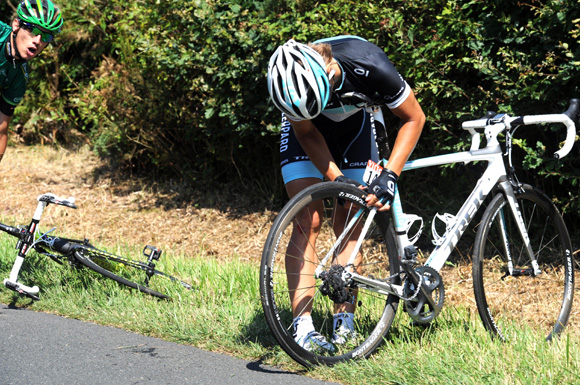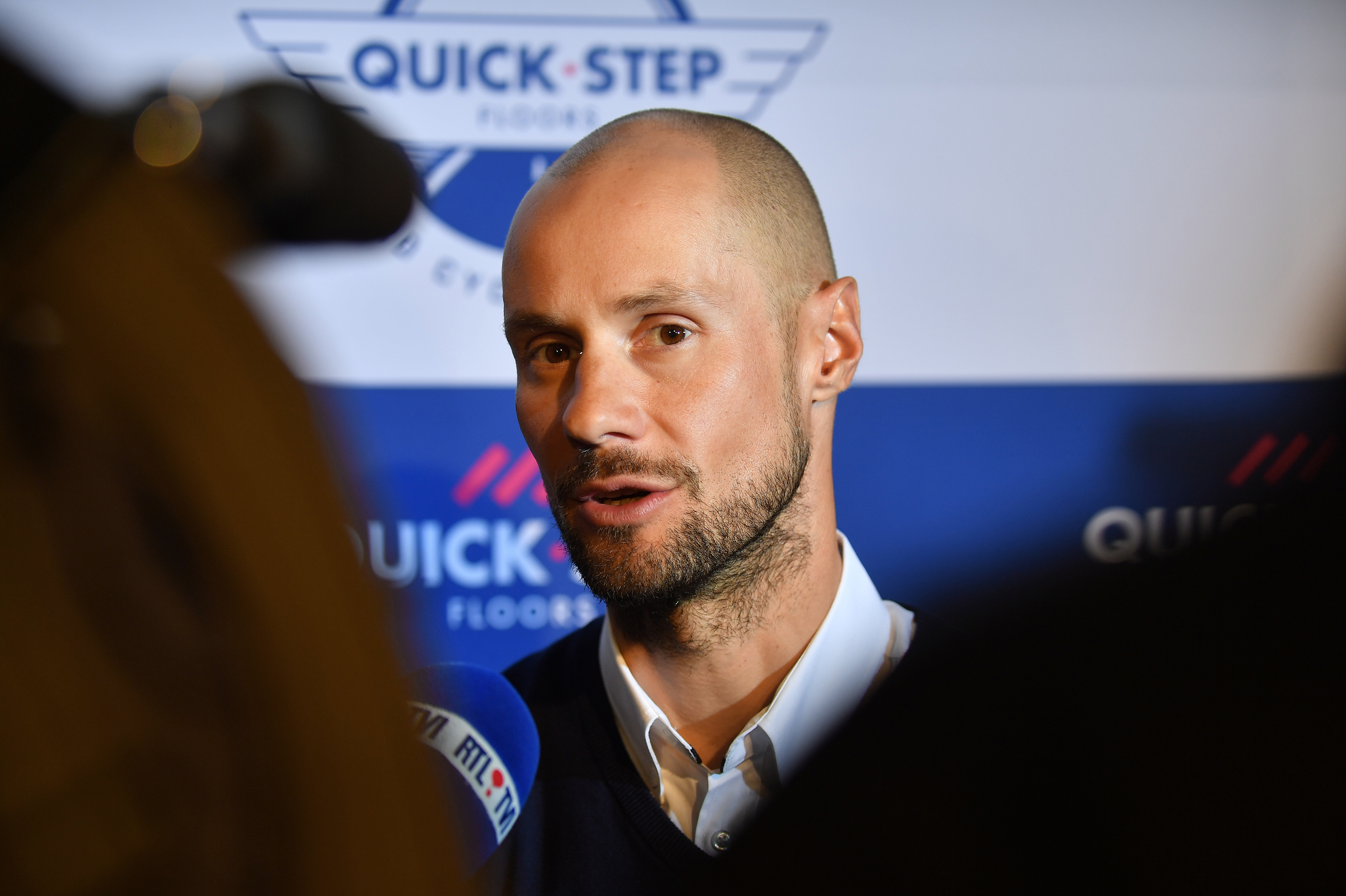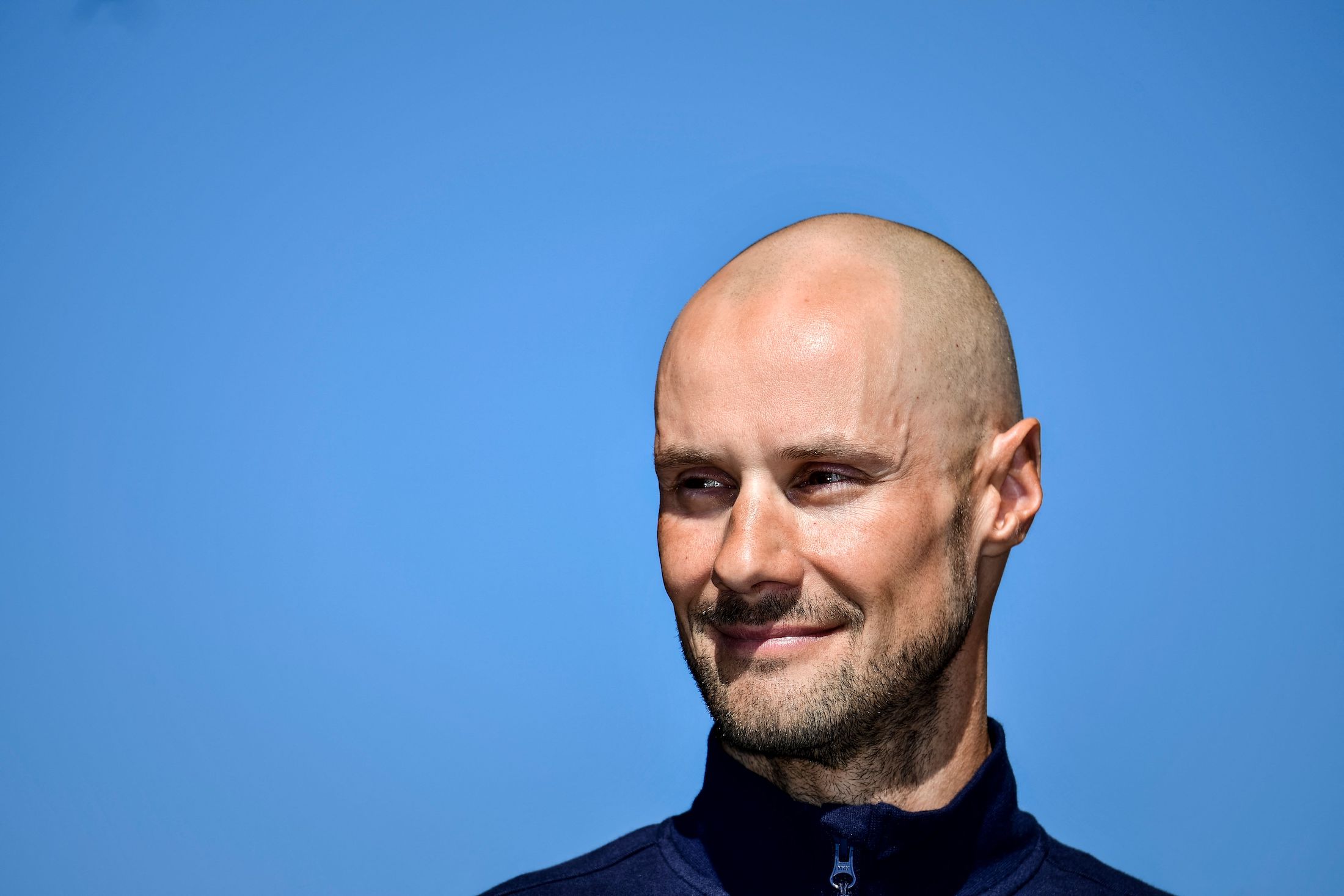Small is beautiful
The Tour de France needs to reduce the size of the field. It's clear that the bunch cannot fit on modern roads, and it's causing danger to the riders.
Words by Lionel Birnie
Sunday July 10, 2011

While it is easy to assert from the comfort of an armchair (or a plastic seat in the press room) that crashes are part and parcel of the first week of any Tour de France, this has been a particularly bad year.
Cuts and bruises are an occupational hazard and broken bones an ever-present possibility in cycling. The riders accept the risks of their sport but it is perhaps time to take notice of a gradual escalation of the dangers they face.
To simply say ‘it’s like this every year’ is to ignore that this season has seen several extreme incidents. It also avoids the obvious conclusion that racing conditions have reached a point where the problem needs to be addressed before any more serious incidents occur.
It’s time for the Tour de France to reduce the size of the field, in order to make it safer for the riders.
Get The Leadout Newsletter
The latest race content, interviews, features, reviews and expert buying guides, direct to your inbox!
**
Wouter Weylandt, a Belgian, died at the Giro d’Italia, the result of a horrendous fall on a very fast, though not technical or obviously treacherous descent. Later in the Giro, the riders persuaded the organisers to remove the Monte Crostis, the descent of which was particularly hazardous. The original precaution taken by the organisers was to place nets at the side of the road to catch any riders who over-shot the off-camber corners.
Nets? At the side of the road? To catch riders as they plummet over the edge? The situation took on an almost cartoonish element and it is staggering that no one thought that if nets were needed perhaps the descent wasn’t suitable. Perhaps they thought that it was no different to strapping a hay bale to a road sign in a central reservation.
Last month, Juan Mauricio Soler, a Colombian rider with the Movistar team, crashed heavily early during the sixth stage of the Tour of Switzerland.
It is not clear exactly how the crash happened. Team officials said he may have clipped the curb before colliding with a post, possibly a road sign, or perhaps a spectator.
Either way, it was a serious collision and Soler was placed in an induced coma. He spent three weeks in the intensive care unit at St Gallen hospital in Switzerland and only yesterday (Saturday) was he transferred home to Spain. His recovery is slow but positive.
And Marco Pinotti of HTC-Highroad is still recovering following a spell in hospital after crashing into a road sign at the Giro.
Fortunately there has not been anything as serious as that at the Tour.
Janez Brajkovic crashed very heavily on stage five to Cap Fréhel. The pictures of the Slovenian lying in the road caused concern though. His small, motionless body lay like a child’s rag doll on the tarmac and for a few moments, until he started to move, you feared for him.
Tom Boonen hit the ground very hard during stage six. He rode to the finish then spent all night feeling unwell, with headaches. The Belgian started the following day’s stage but felt terrible. The effects of concussion do not disappear after a night’s sleep and the fact he started at all raises questions over the pressures, both internal and external, riders feel to continue in the Tour. It is unlike any other race in that respect. No one wants to pull out without giving it everything to carry on.
Bradley Wiggins of Team Sky and Remi Pauriol of FDJ crashed 37 kilometres from the end of stage seven to Chateauroux. Both suffered broken collarbones, which is one of the most common injuries when there’s a sudden crash in the bunch because the riders do not have time to do anything other than react instinctively, putting their hand out to break the fall.
Chris Horner of Radioshack was another who suffered concussion. The American hit his head hard, was reportedly knocked unconscious and was dazed and confused. He got back on his bike and rode to the end of the stage. The race doctor, who can only advise and does not have the authority to force a rider to stop, accompanied him all the way.
Video footage on bicycling.com of Horner crossing the line at Châteauroux made for disturbing viewing. “I don't understand, how long ago was it?” he asked his team’s press officer. “About 25k from the finish.”
“We’ve been chasing for 25k? Oh man.”
A little later, when being placed on a stretcher, Horner asked: “Did I finish? I gotta go to the hospital? But I finished?”
There have also been completely avoidable incidents. On stage one, with the bunch spread across the width of the road, Maxim Iglinskiy of Astana clipped the shoulder of a yellow-shirted spectator who was standing far too close and was facing the wrong way. Then Nicki Sorensen of Saxo Bank was clipped by a race motorcycle, which was carrying a photographer. The motorcyclist was unaware that he had dragged Sorensen’s bike for a hundred metres.
**
There is no doubting that crashes add a frisson of excitement to the race. They are an element of the sport that reminds us of the part luck plays in proceedings, particularly in stage racing. Surviving the first week unscathed is the first priority for the overall contenders.
But increasingly there are questions about whether professional cycling needs to make some pragmatic changes.
Sky’s Michael Barry has written eloquently about the dangers. David Millar of Garmin said on Twitter: “Tour very Giro-like, mad parcours, transfers galore. Still child’s play compared to the savagery that is The Italian Race.” Pinotti has made several calls for the bunch to be reduced in size.
The roads of Europe continue to change, particularly in France. Twenty five years ago, it was virtually a roundabout-free zone. Now they are everywhere. Traffic-calming humps and raised central reservations have altered for good the character of the roads. More than ever, villages are now bottlenecks. Towns are jammed with obstacles, like a real-life video game. Riders flow both sides of a roundabout, and hop onto curbs. Sixty or seventy riders back, they often don’t see the gendarme with the yellow flag signalling the traffic island. Their first sign is either a shout from up ahead or the sight of the bunch parting in front of them.
Some of the most damaging crashes have happened on the straight roads, though, so some might suggest it’s more to do with basic bike-handling skills than the danger posed by obstacles.
On stage one, there were nine roundabouts in the final six kilometres, meaning the bunch was on its wits. But the stage-altering crash happened on an easy stretch of road, nine kilometres out.
Crashes happen on straight bits of road because that is where the peloton is at its most fluid. Knowing that there are villages or roundabouts to come, the whole peloton sees a straight road as an opportunity to move up.
Data gathered Chris Horner’s SRM computer during stage seven suggests that he had been accelerating hard immediately prior to the crash. This was partly because the bunch was preparing for the intermediate sprint at Buzancais.
Pinotti’s suggestion that the size of the peloton be reduced for the Grand Tours needs to be considered. Geraint Thomas said on Twitter that the riders need to take responsibility too. But there is so much at stake that altering the way the riders move and compete for space at critical times would appear to be asking too much.
Thomas does have a point, but asking the riders not to try to move up isn’t going to wash. The French government are not about to change the way the roads are designed, just for a bike race, either.
Which means that the obvious solution is to reduce the size of the bunch. 200 riders might have fitted on the roads of the 1960s, 1970s and 1980s, but they won’t fit on modern roads. There need to be fewer riders.
The team owners will fear that reducing the field will lead to greater competition for places but the Tour might benefit from smaller rather than fewer teams.
If each team had seven riders instead of nine, the bunch could be reduced from 198 starters to 154. That might also have an effect on the style of racing as individual teams would not be able to take such a controlling grip on certain stages.
Of course, the sprinters would be opposed to the idea because fewer riders to chase and set up the finishes does not suit their interests. And the overall contenders might be nervous because a couple of illnesses or injuries would leave them with only a few team-mates to call upon.
But sport is supposed to be unpredictable and entertaining. Fans would benefit from cycling being made more exciting, while riders would benefit because it would be far safer. Conservative team managers won’t like it, but they would have to adapt.
The French government is not going to roll back a decade of traffic-calming measures, and ASO is not going to pay to temporarily remove every traffic island on the route.
The roads of France have changed and the Tour needs to take this into account.
Cycle Sport's Tour village: All our Tour coverage, comment, analysis and banter.
Follow us on Twitter: www.twitter.com/cyclesportmag

Thank you for reading 20 articles this month* Join now for unlimited access
Enjoy your first month for just £1 / $1 / €1
*Read 5 free articles per month without a subscription

Join now for unlimited access
Try first month for just £1 / $1 / €1
Edward Pickering is a writer and journalist, editor of Pro Cycling and previous deputy editor of Cycle Sport. As well as contributing to Cycling Weekly, he has also written for the likes of the New York Times. His book, The Race Against Time, saw him shortlisted for Best New Writer at the British Sports Book Awards. A self-confessed 'fair weather cyclist', Pickering also enjoys running.
-
 Gear up for your best summer of riding – Balfe's Bikes has up to 54% off Bontrager shoes, helmets, lights and much more
Gear up for your best summer of riding – Balfe's Bikes has up to 54% off Bontrager shoes, helmets, lights and much moreSupported It's not just Bontrager, Balfe's has a huge selection of discounted kit from the best cycling brands including Trek, Specialized, Giant and Castelli all with big reductions
By Paul Brett
-
 7-Eleven returns to the peloton for one day only at Liège-Bastogne-Liège
7-Eleven returns to the peloton for one day only at Liège-Bastogne-LiègeUno-X Mobility to rebrand as 7-Eleven for Sunday's Monument to pay tribute to iconic American team from the 1980s
By Tom Thewlis
-
 Exclusive: Cycling was a 'great distraction' says Bradley Wiggins as he opens up about trauma and mental health
Exclusive: Cycling was a 'great distraction' says Bradley Wiggins as he opens up about trauma and mental healthTour de France winner says he has found a "happy balance" with cycling in his life
By Amy Sedghi
-
 A complete history of Ineos Grenadiers kits, from Adidas to Gobik, via Rapha
A complete history of Ineos Grenadiers kits, from Adidas to Gobik, via RaphaThe British team switch to Gobik in 2024 after two years with Bioracer
By Tom Thewlis
-
 Tom Boonen: 'Remco Evenepoel should get away from Belgium as much as possible'
Tom Boonen: 'Remco Evenepoel should get away from Belgium as much as possible'The former Quick-Step rider said he didn't enjoy the fame of being world champion
By Tom Davidson
-
 La Planche des Belles Filles: will today's Tour de France climb be make or break?
La Planche des Belles Filles: will today's Tour de France climb be make or break?Primož Roglič may be looking to salvage his Tour de France by exorcising his 2020 demons on the brutal climb
By Tom Thewlis
-
 'Dismiss Geraint Thomas at your peril' — Bradley Wiggins sees Welshman as Tour de France 'underdog'
'Dismiss Geraint Thomas at your peril' — Bradley Wiggins sees Welshman as Tour de France 'underdog'Ineos Grenadiers rider will head to Tour off the back of Tour de Suisse win
By Adam Becket
-
 Bradley Wiggins: It would be a 'real shame' if Mark Cavendish wasn't at the Tour de France
Bradley Wiggins: It would be a 'real shame' if Mark Cavendish wasn't at the Tour de FranceCavendish's former teammate and Madison partner thinks it would be "crazy" not to pick him
By Adam Becket
-
 From the cobbles to the race track: Tom Boonen is living his best life
From the cobbles to the race track: Tom Boonen is living his best lifeClassic legend Tom Boonen on race car driving, Mathieu van der Poel and modern cycling
By Anne-Marije Rook
-
 Bradley Wiggins: Ineos Grenadiers victory at Paris-Roubaix was 'typical Dave Brailsford'
Bradley Wiggins: Ineos Grenadiers victory at Paris-Roubaix was 'typical Dave Brailsford'Former Tour de France winner spent the day on a motorbike covering the race
By Adam Becket